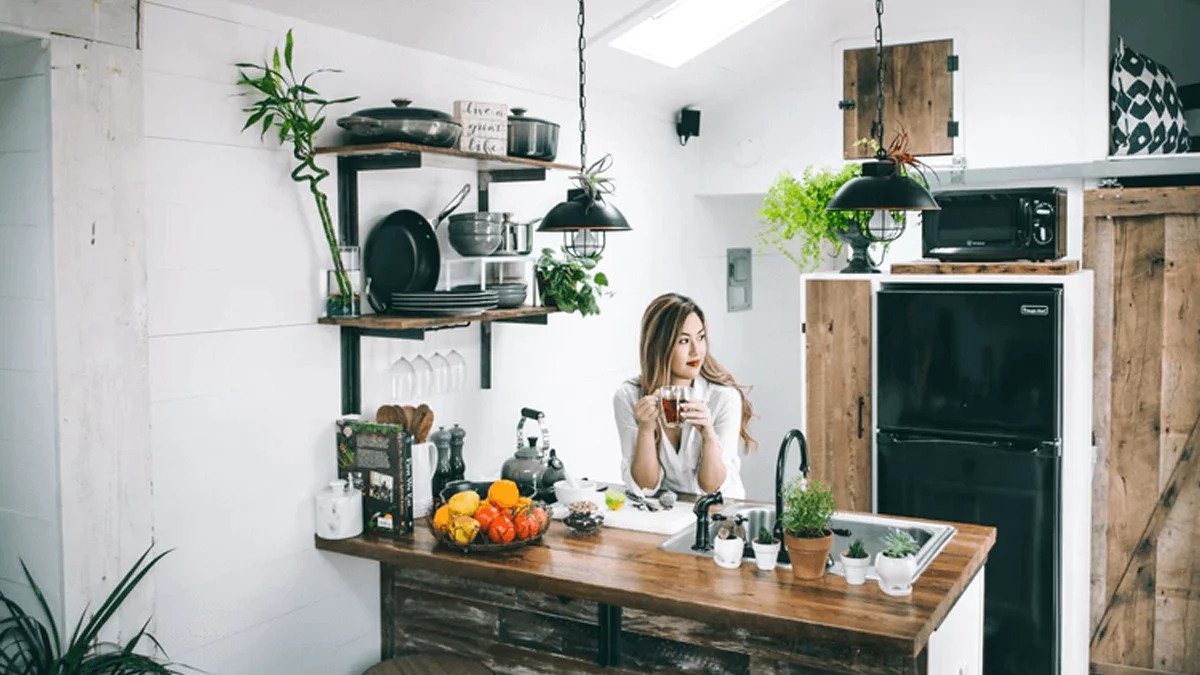Sustainable Materials for Eco-Friendly Renovations
Reclaimed Wood:
Reclaimed wood offers a unique and rustic aesthetic while helping conserve forests. Salvaged wood from old buildings or barns can be repurposed into flooring, furniture, and architectural details, reducing the demand for newly harvested timber.
Bamboo:
Bamboo is a fast-growing, renewable resource that is exceptionally durable and versatile. It can be used for flooring, cabinets, and even as an alternative to traditional hardwood.
Recycled Glass:
Recycled glass countertops and tiles are made from post-consumer or post-industrial glass, diverting waste from landfills. They come in a variety of colors and designs, adding a stylish touch to kitchens and bathrooms.
Recycled Metal:
Metals like aluminum and steel can be recycled and repurposed for roofing, siding, and structural elements. Recycled metal roofs are energy-efficient and can last for decades.
Cork:
Cork is harvested from the bark of cork oak trees without harming the tree itself. It’s a versatile and sustainable material used for flooring, wall coverings, and even furniture.
Wool Carpet:
Wool is a renewable and biodegradable material that makes an excellent choice for eco-friendly flooring. Carpets are naturally resistant to stains and offer great insulation.
Recycled Plastic:
Materials like recycled plastic lumber can be used for outdoor decking, fencing, and furniture. It’s durable, low-maintenance, and diverts plastic waste from the environment.
Natural Stone:
Opt for locally sourced and responsibly quarried natural stone for countertops and flooring. Stone like granite and slate has a timeless look and is highly durable.
Low-VOC Paint:
Traditional paints release volatile organic compounds (VOCs) that can be harmful to indoor air quality. Low-VOC and zero-VOC paints are healthier alternatives and come in a wide range of colors.
Insulation Materials:
Choose eco-friendly insulation materials like recycled denim, soy-based foam, or cellulose made from recycled paper for better energy efficiency.
Design Ideas for Sustainable Home Renovations
Passive Solar Design:
Incorporate passive solar design principles to maximize natural light and heat. Large south-facing windows and thermal mass materials can help regulate indoor temperatures.
Energy-Efficient Windows and Doors:
Install energy-efficient windows and doors to reduce heating and cooling costs. Double or triple-glazed windows with low-E coatings offer excellent insulation.
Energy-Efficient Lighting:
Replace incandescent bulbs with LED or CFL lighting. Consider adding dimmer switches and motion sensors to reduce electricity consumption.
High-Efficiency HVAC Systems:
Upgrade to a high-efficiency heating, ventilation, and air conditioning (HVAC) system to reduce energy usage and improve indoor comfort.
Smart Home Technology:
Integrate smart home systems for efficient energy management. Programmable thermostats, lighting controls, and energy monitoring devices help reduce consumption.
Green Roof:
A green roof is not only visually appealing but also energy-efficient. It helps with insulation, reduces stormwater runoff, and can even be used for gardening.
Solar Panels:
Solar panels provide a renewable and sustainable source of energy. Installing photovoltaic panels on your roof can significantly reduce your electricity bills.
Rainwater Harvesting:
Collecting rainwater for outdoor use is an eco-friendly practice. Use rain barrels to capture water for irrigation and reduce water consumption.
Natural Ventilation:
Design your home with ample windows and ventilation to maximize natural airflow. This reduces the need for air conditioning and artificial lighting.
Recycled and Repurposed Décor:
Incorporate recycled and repurposed decor items, such as vintage furniture, reclaimed wood accent walls, and sustainable artwork, into your design.
Benefits of Eco-Friendly Home Renovations
Reduced Environmental Impact:
Eco-friendly renovations help reduce the demand for virgin resources and limit the environmental footprint of construction projects.
Energy Savings:
Sustainable materials and energy-efficient designs can lead to significant reductions in energy consumption, resulting in lower utility bills.
Improved Indoor Air Quality:
Low-VOC paints and non-toxic materials contribute to healthier indoor air quality, reducing the risk of respiratory issues.
Increased Home Value:
Energy-efficient and sustainable features can enhance the resale value of your home, making it more attractive to eco-conscious buyers.
Personal Well-being:
Natural lighting, improved air quality, and sustainable materials create a more comfortable and pleasant living environment.
Community Impact:
Eco-friendly renovations can inspire others in your community to adopt sustainable practices, contributing to a broader environmental impact.
Long-Term Savings:
While eco-friendly materials and technologies may have a higher initial cost, they often provide long-term savings through reduced maintenance and utility bills.
Conclusion
Eco-friendly home renovations offer an opportunity to combine style and sustainability, creating spaces that are both beautiful and environmentally responsible. By choosing sustainable materials, energy-efficient designs, and eco-conscious practices, homeowners can reduce their environmental impact, lower utility costs, and enjoy a healthier living environment. With eco-friendly renovations, you can transform your house into a sustainable and stylish home that benefits you, your community, and the planet.



